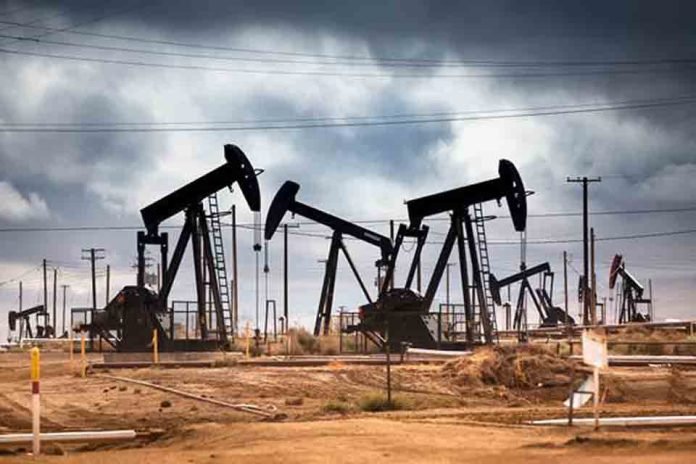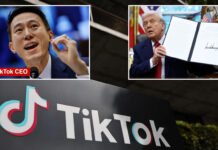New Delhi – Despite a sharp decline in global crude oil prices, India’s three state-run oil marketing companies – Indian Oil Corporation (IOC), Bharat Petroleum Corporation Ltd. (BPCL), and Hindustan Petroleum Corporation Ltd. (HPCL) – are earning record profits on the sale of petrol and diesel. Yet, consumers continue to see no relief at the pumps, as retail fuel prices remain unchanged across the country.
Crude Oil Below $70 Since March
Since March 2025, the price of crude oil has remained consistently below $70 per barrel, providing domestic oil refiners with substantial margins. Current estimates suggest that companies are making ₹11.20 per liter on petrol and ₹8.10 per liter on diesel.
Adding to the windfall, Russia has offered India an additional 5% discount on crude oil, reinforcing India’s access to cheap supplies in the coming months. This discount, combined with falling global prices, has positioned Indian refiners in an advantageous position compared to international peers.
Brokerage Insights: Margins Far Above Normal
Equity analysts have noted that the current margins are well above historical averages.
Bhaskar Chakraborty, Jefferies equity analyst, highlighted that the marketing margin of ₹8.1–₹11.2 per liter on diesel and petrol is significantly higher than the standard level.
Experts project that these strong margins will continue supporting company earnings through the rest of the financial year 2025–26.
Profits Surge: ₹16,184 Crore in Just Three Months
In the April–June quarter of FY 2025–26, the three companies collectively posted a net profit of ₹16,184 crore, which is two-and-a-half times higher year-on-year.
BPCL led with a net profit of ₹6,124 crore.
IOC reported ₹5,689 crore.
HPCL earned ₹4,371 crore.
These numbers reflect the robust profitability from fuel sales, particularly at a time when international crude oil has been trending downward.
Refining and Marketing Gains Per Barrel
The profits are also visible in the per-barrel earnings from refining and marketing:
BPCL: $4.88 per barrel
HPCL: $3.08 per barrel
IOC: $2.15 per barrel
In terms of distribution, BPCL sold 153 kiloliters of fuel per pump monthly, while IOC averaged 130 kiloliters.
According to ICICI Securities, April–June margins translated into ₹10.3 per liter on petrol (compared to ₹4.4 a year earlier) and ₹8.2 per liter on diesel (versus ₹2.5 in the same quarter last year).
Crude Prices Down 21%, Yet No Relief for Consumers
Despite crude oil being 21% cheaper and international benchmark fuel prices down 16–18%, Indian retail fuel prices have remained unchanged.
This means the benefits of cheaper crude have not been passed on to consumers, as companies continue to keep pump rates steady, thereby boosting their profitability.
Subsidy Support on LPG Keeps Profits Intact
While petrol and diesel remain highly profitable, the government continues to provide heavy subsidies on LPG. To compensate the oil companies for selling LPG cylinders below cost, the government has allocated a ₹30,000 crore subsidy package.
Despite absorbing the LPG subsidy, IOC, BPCL, and HPCL have still reported robust quarterly profits, showing how cheaper crude has balanced out their financial books.
Excise Duty Hike: ₹2 Increase in April
In April 2025, the government increased excise duty by ₹2 per liter on both petrol and diesel. However, retail prices for consumers remained unchanged, as the excise hike was absorbed by adjusting against lower crude import costs.
This strategy allowed the government to boost its revenue without sparking consumer backlash, while oil companies continued to enjoy expanded margins.
What It Means for Consumers and the Economy
The situation highlights a striking paradox:
Consumers: Paying the same at pumps despite crude oil being at multi-month lows.
Oil Companies: Reaping record profits with margins far above long-term averages.
Government: Collecting more excise duty while offering subsidies on LPG to maintain balance.
Analysts believe that while profits are healthy in the short term, sustained pressure may grow from both consumers and opposition parties for reductions in fuel prices.
Conclusion
The decline in global crude oil prices has turned into a golden period for India’s oil giants, allowing them to post bumper earnings while maintaining retail stability. However, the lack of consumer benefit raises critical questions about pricing policies, government revenue priorities, and the long-term balance between corporate profits and public relief.
As crude oil remains cheap and Russian discounts continue, the debate over whether consumers will ever see a price cut at the pumps is set to intensify in the coming months.
{stop article}
Do you want me to also craft SEO headlines, keywords, and meta descriptions for this oil profits story (like I did for the Rohingya one) so it can dominate Google search rankings?
















